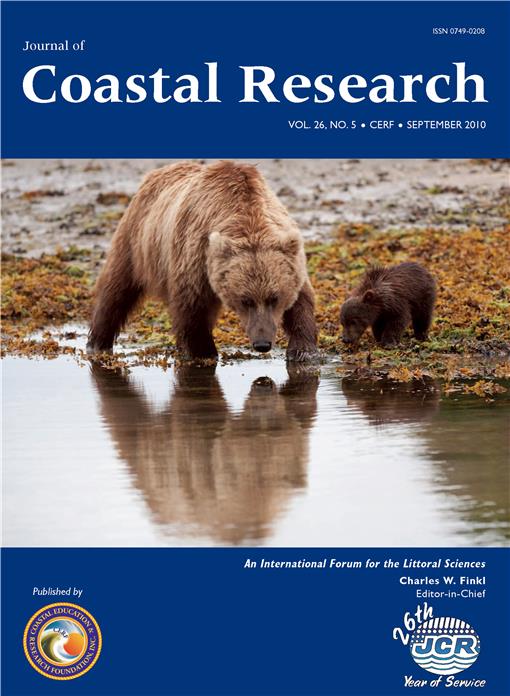A mother brown bear (Ursus arctos) and her young cub comb the shoreline of Geographic Harbor in Katmai National State Park during low tide. Brown bears rule the nearly 400 miles of rugged coastline of this national park situated at the base of the Alaska Peninsula. It has been federally protected since 1918 and became a national park in 1980. This cub is learning to dig for clams along the shoreline of the Arctic harbor at low tide. Certain bears utilize this foraging habitat by hunting for mussels, isopods, barnacles, marine worms (polychaetes and peanut worms), and small intertidal fishes (blennies and sand lances). These organisms are high in digestible protein and, therefore, the bears will not have to spend much time eating vegetation in order to meet their daily energy needs. The intertidal flats are great for finding clams, but also safer for young cubs because dangerous adult males are rarely seen in these habitats.
Geographic Harbor is located in the southwest base of the Alaskan Peninsula, and is immediately adjacent to Amalik Bay. This harbor receives its heavy tide fluctuations directly from the Shelikof Strait, and by doing so, much of the harbor coast becomes exposed for foraging brown bears during low tide. The Alaska Current and the Alaska Coastal Current are the closest ocean currents that affect this shoreline, and allow this tidal flat to be enriched with a multitude of invertebrates and small fish.
(Photograph by Jim Mahoney, Wildlife Photographer, West Palm Beach, Florida, USA).






